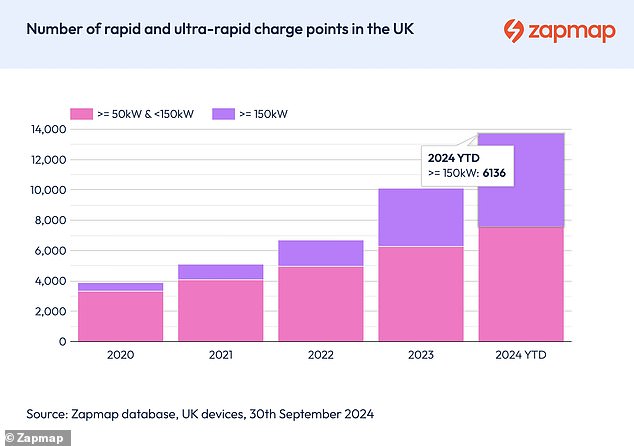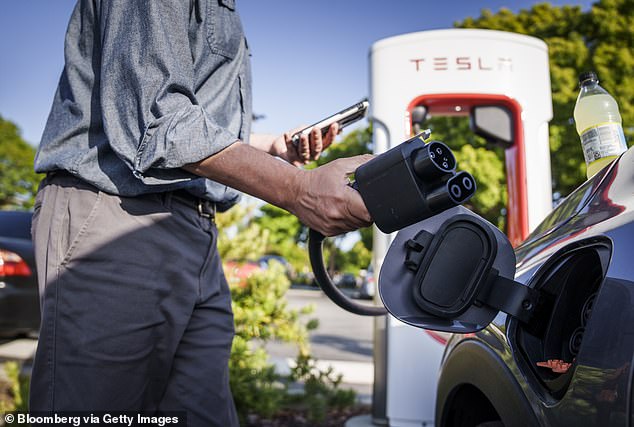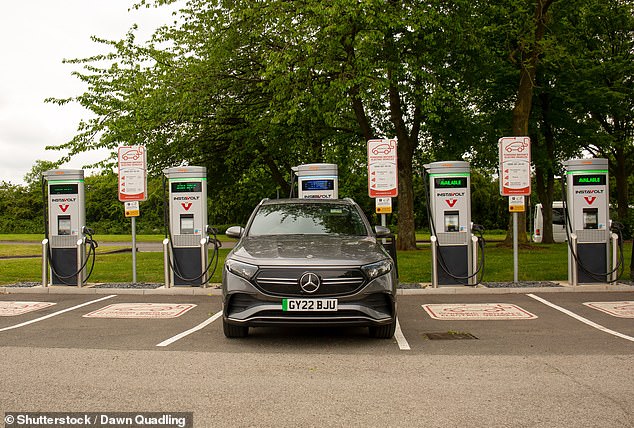Table of Contents
200 ultra-fast electric vehicle chargers over 150kW have been installed on motorway services in England since the start of the year, new research shows.
As a result, almost half of motorway services in England now have six or more ultra-rapid chargers, Zapmap and the RAC found.
These 150 kW chargers can offer a range of 100 miles in 15 minutes and are located on motorway services to offer fast battery recharges on long journeys.
An additional 200 ultra-fast chargers for electric vehicles over 150kW have been installed on motorway services in England since the start of the year, new research from Zapmap and the RAC shows.
The number of 150 kW chargers has increased by 51 percent in the past eight months, as installation numbers accelerate.
This means almost half (48 per cent or 55 sites) of the 114 motorway services in England now have six or more chargers over 150 kW, with many sites having faster speeds of up to 350 kW.
Six highway locations are equipped with more than 12 chargers larger than 150 kW, while only four do not have high-power chargers larger than 50 kW.
The estimated 1.17 million EV drivers in the UK can now charge their vehicles in a matter of minutes using 595 of these chargers.

Ultra-fast chargers have grown at a particularly high rate, with more than 2,300 installed this year. There are 60% more ultra-fast chargers at the end of September 2024 than in December 2023
How does this compare with government targets?
As of September 2024, Zapmap puts the number of fast or ultra-fast chargers at 13,706 across 5,762 charging locations in the UK.
Fast chargers range from 50kW to 149kW and ultra-fast charging points from 150kW+.
In 2022, the previous government set a very ambitious target of having six or more high power chargers over 50kW in every motorway service area in England by the end of 2023.
The most recent data shows that this goal has not been met: only 54 percent (61 sites) have this charger threshold.
However, the direction of charging deployment has changed somewhat, with the charging industry offering 150kW ultra-fast chargers – almost two-thirds (64 per cent or 73 sites) of all motorway services in England have at least a charger of more than 150 kW.
Overall, the number of fast and ultra-fast chargers has increased from 3,871 at the end of 2020 to 10,118 at the end of 2023 and more than 13,000 in September 2024, a 36 percent increase in devices since December 2023.
But ultra-fast chargers have grown at a particularly high rate, with more than 2,300 installed this year.
At the end of September 2024 there were 60 percent more ultra-fast chargers than in December 2023.
Which service stations have the best supply of chargers?
There are currently six well-located motorway services with more than 12 devices of 150 kW or more; Reading, M4 eastbound and westbound, Cobham M25, Exeter M5, Gloucester M5 northbound and Frankley M5 southbound.
The two services with the most 150kW+ chargers are Frankley on the M5 southbound, which has 28 ultra-rapid chargers, and Reading on the M4 westbound, which has 25 ultra-rapid chargers.
And many locations also have additional Tesla chargers and Tesla recently opened its Supercharger network to non-Tesla cars with subscriptions.
Tesla Superchargers charge up to 250 kW and can travel up to 200 miles in just 15 minutes.

Some 42 Supercharger sites with 477 chargers are open to all CCS-compatible electric vehicles, and this number is expected to increase in the near future.
Each motorway service has an average of seven chargers over 50 kW, meaning there are a total of 818 at 114 locations.
If we look at ultra-fast chargers alone, there are an average of five on each service in England (595 across 114 sites).
Only four service stations do not currently have any charging supply above 50 kW.
Two of them, Leicester Forest East M1 northbound and southbound, are managed by Welcome Break, which has informed the RAC and Zapmap that there are difficulties getting enough power to the sites.
The company is working to resolve this issue with the National Grid Electricity Distribution, National Highways and local authorities and hopes to install ultra-fast chargers next year.
The other two locations without fast charging points (Sedgemoor M5 northbound and Telford M54) are still waiting for high-power connections to the mains.
Gridserve, the charging point operator which runs the national electric motorway network on motorway services, confirmed it hopes to start installing chargers in Sedgemoor in 2025.
Which electric vehicles can be charged at 350 kW?
The Audi Q6 e-Tron, Hyundai Ioniq 5 and Tesla Model 3 charge above 250 kW.
The new Porsche Taycan and Audi e-Tron GT can charge up to 320 kW, but the only electric vehicle that can currently charge at 350 kW is the Lotus Eletre.
The Eletre can charge from 10 to 80 percent in 20 minutes and has a range of 600 kilometers.

Some links in this article may be affiliate links. If you click on them, we may earn a small commission. That helps us fund This Is Money and keep it free to use. We do not write articles to promote products. We do not allow any commercial relationship to affect our editorial independence.


